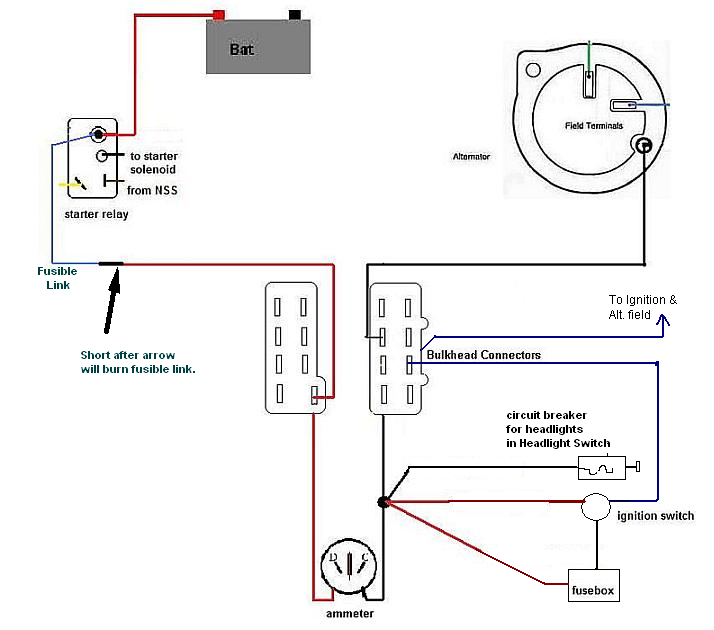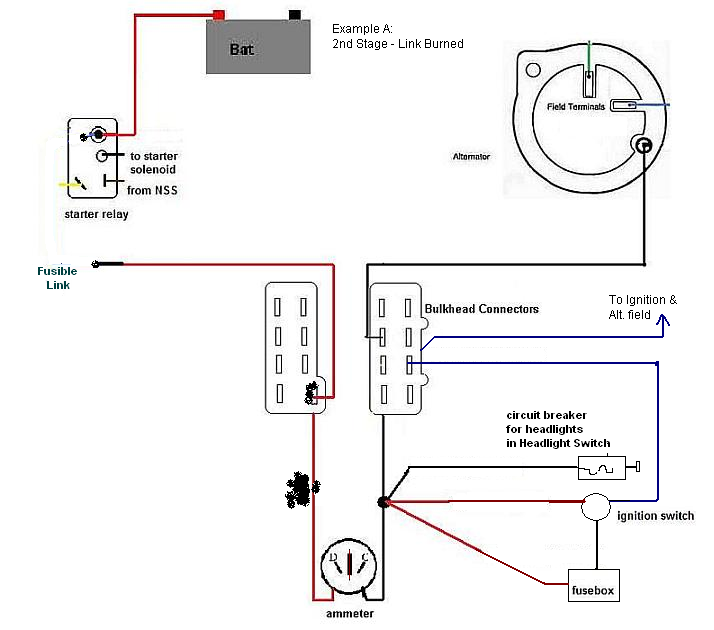
| Summary |
On other Pages |
| Fusible
links are time dependent fuses. Very high current from a short
will burn a fusible link quickly. Moderately high current will
only melt the link when it gets hot enough. The length of time
depends on the current and size of the link. Contents Fusible Link Purpose Fusible Link In Action Problems Solutions Complete Charging System Wiring Diagrams |
Understanding the Charging System Ammeter '67 Barracuda Main Page '85 Grand Wagoneer Main Page Charging & Light System Wiring Diagrams Headlights & Fog lights Off-site Tips on Wiring (CJ Forum) |
If the battery shorts, all of the battery power will be trying to get to ground.
Fusible link (or links on some models) will protect the rest of the
wiring from damage if there is a short before any fuses or circuit
breakers.
Unlike fuses and circuit breakers, fusible can handle normal high
current loads, such as running ignition and headlights and other
equipment for short periods of time.
When subject to high current for over time periods, the link should overheat and fail before the attached wires and connectors do.
If there is a dead short, the battery current is high enough to melt the fusible link quickly.

|
Bare Conductor touches chassis. Battery current goes to ground at contact.
|
Link Melted.
Evidence of overheating likely at connectors.  |
|
Shown here
the short is in the output circuit of the alternator.
Ammeter will show maximum discharge! |
Fusible link should have protected against major
damage. Expect evidence of overheating at all connections.
Any places that were loose or oxididized will be worse.
|
| Example of Power flow with new circuits added at starter solenoid. | Circuit Amperage |
|
|
In this example, 15 amp could be from: Lights on relays, 9 amps Electric Fans, 6 amp minimum 20 amps assumes 5 amps for charging. 25 amps from alternator includes: 2.5 amps for field circuit 2.5 amps for ignition coil Some modern amperage loads at AA1car.com Electric Winches are special consideration. They can draw 200 to 400 amps in use. An alternator can not supply that much current. It will have to come from the battery. Then the alternator will have to recharge the battery. |